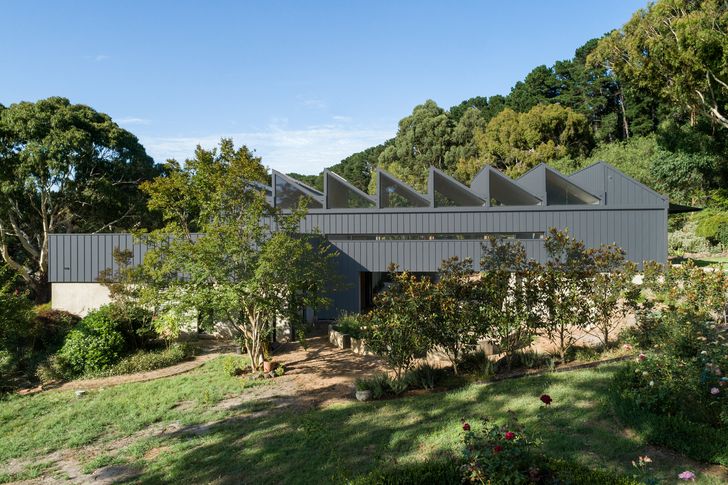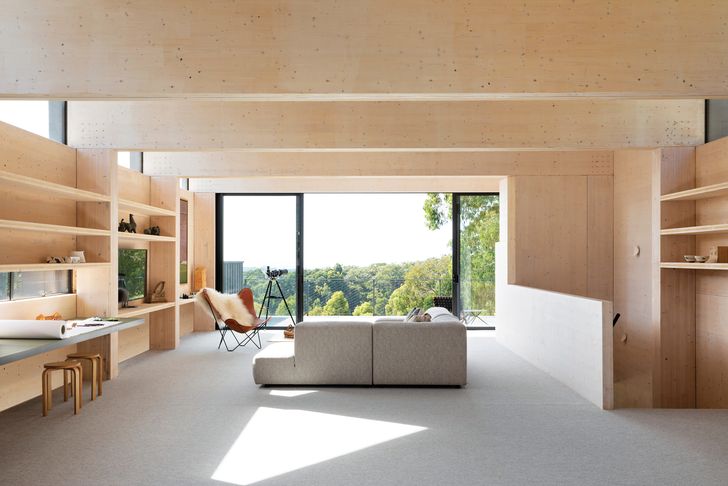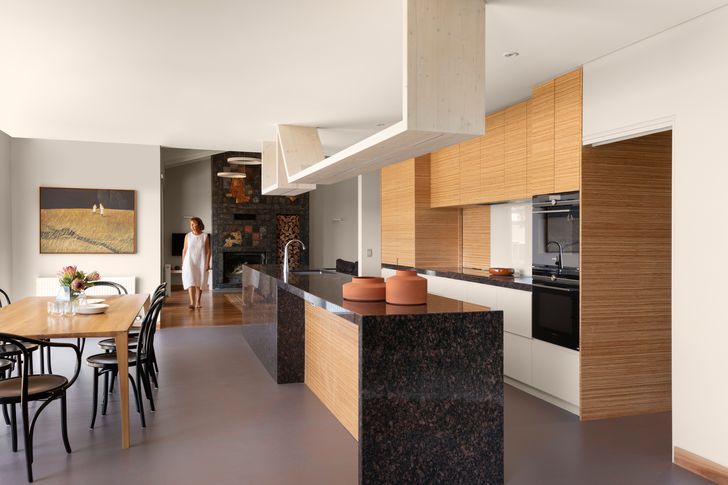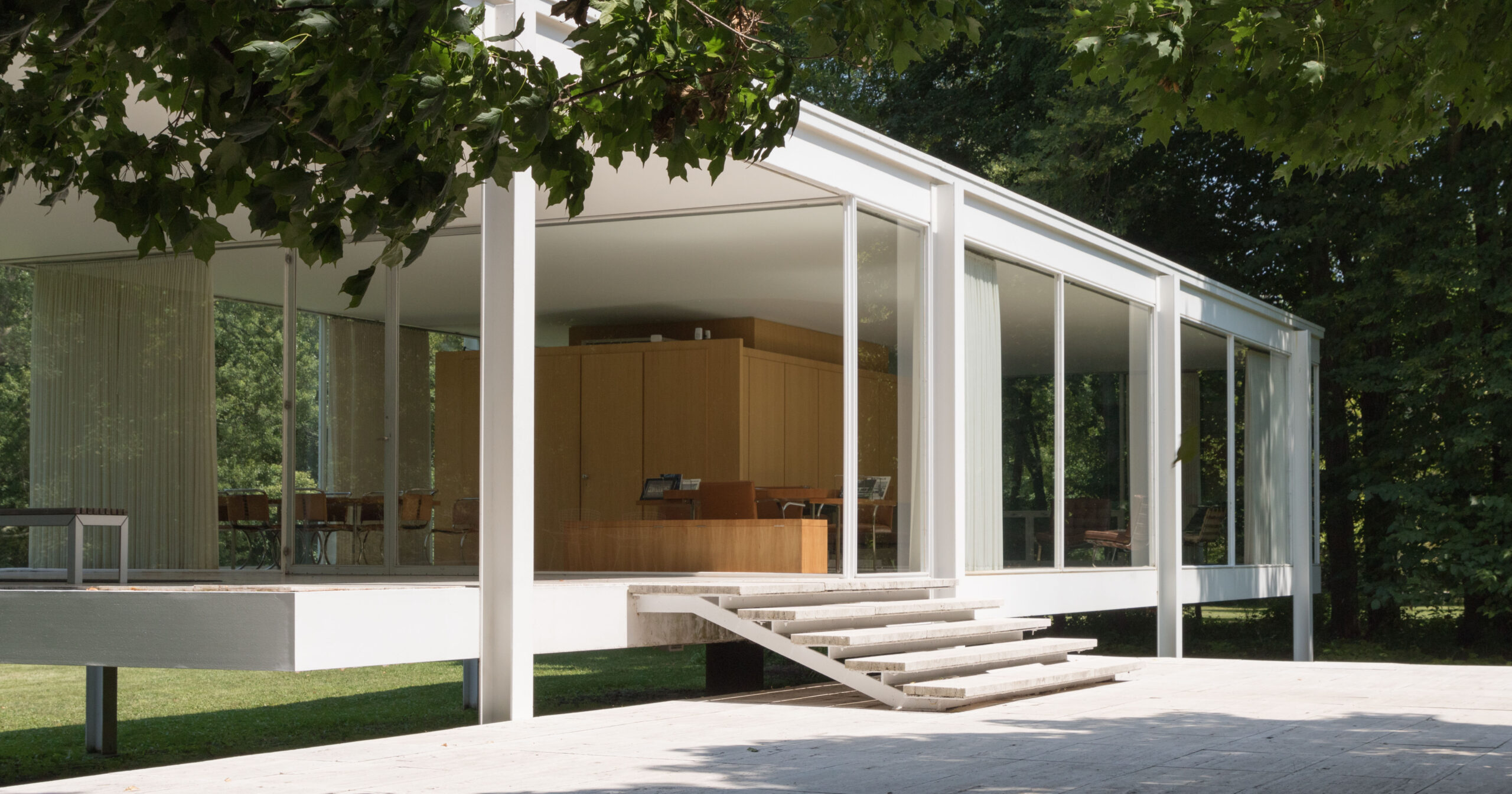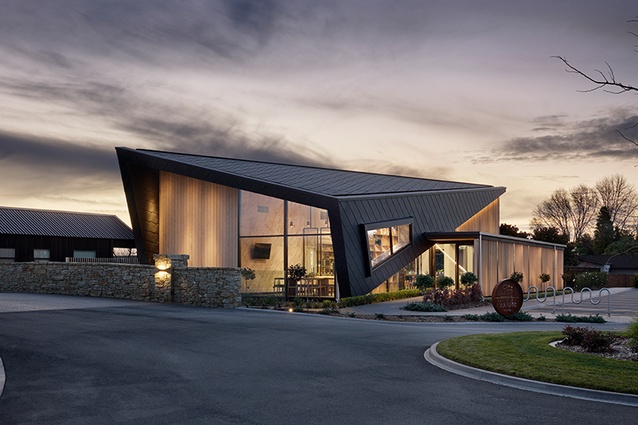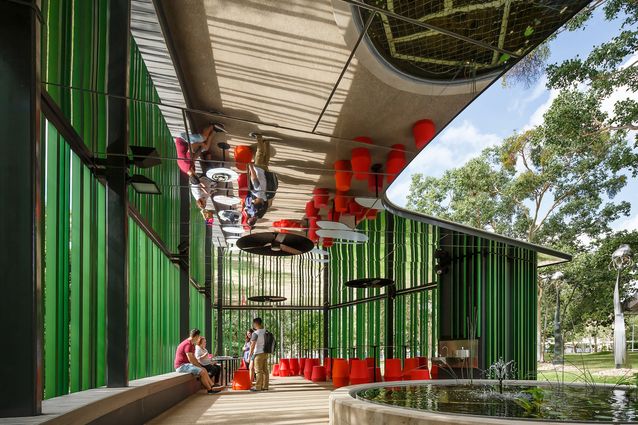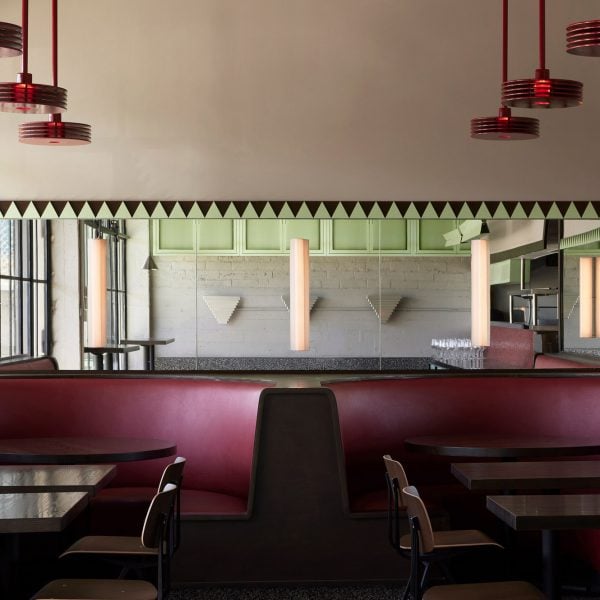For homeowners Peter and Sue, Melbourne’s bayside suburb of Mornington was their home away from home. The couple split their time between their inner-city property and their 1970s-era country home in Mornington, for which they had long sought an architectural addition. Having first engaged FMD Architects for the project nearly 10 years ago, the clients’ brief evolved dramatically over the course of the design’s development as their children married and they welcomed several grandchildren into the family. Before long, the Mornington property became a favoured place for the extended family to spend time together and, as a result, privacy, congregation spaces and separable wings became the driving demands of the new design.
FMD Architects collaborated closely with Peter, who was also the project builder. From the outset, Peter was committed to using cross-laminated timber (CLT) as the principal building material. This prefabricated timber product is commonly used in large-scale projects, in which he was well-versed. Often described as “jumbo plywood,” CLT allows for wide-span timber structures with minimal structural steel and provides a stable, high-performing and fully sealed building envelope.
With its CLT portals, the upstairs space has a composed quality. Artwork: Maria Stuarda Varetti.
Image:
Fiona Dunin
While the use of CLT in residential architecture was uncommon at the start of the project, a number of houses have since been completed using this construction methodology and served as useful case studies. The hands-on client also trialled the capabilities of the product himself, constructing a small outbuilding on site.
Peter was keen to explore an elongated bridge form in order to exemplify the spanning capabilities of the material. FMD Architects responded with a saw-tooth form clad in charcoal-coloured roof sheeting, which protects the CLT structure from the weather and establishes a bold and rhythmic profile set against the rugged landscape.
While the processes of researching, designing, engineering and documenting the CLT structure spanned many years, the expansive framework was erected on site in just four days. The existing brick house sits inconspicuously below the addition, its traditional gabled roof masked by a matching shroud of cladding.
Beneath the bridge, the carport expresses the home’s CLT structure, with robust radiata pine members spanning 14 metres. Moving from the undercroft to the entry, a number of CLT expressions come together in the stairwell: a radiata pine stair, a weighty glulam column and a limewashed Norwegian spruce wall provide a finer-grade finish that continues into the upper level.
On the first floor, the expansive multi-use “bridge” space celebrates the form and precision of the CLT structure. “The exposed walls and ceilings required absolute exactness in the construction system to achieve a finely crafted outcome,” explains FMD Architects director Fiona Dunin. The saw-tooth roof lends the space a driving rhythm of CLT portals that frame a wall of joinery, establishing a composed and almost monastic spatial quality. With broad-ranging views to the south, the bridge is an idyllic congregation space in which the family’s three generations can work, play, relax and socialize.
The multipurpose “bridge” provides a flexible space, with southerly views, for adults and children to work and play.
Image:
Dianna Snape
The east and west walls are formed from single-mass CLT members spanning 10 metres, punctuated by narrow slot windows that invite cooling cross-ventilation. The saw-tooth roof pitching to the north is layered with banks of solar panels that power the home, while embedded lighting animates the angular planes at night. Fine-aluminium-framed windows occupy each saw-tooth form in elevation to capture indirect light, while integrated ventilation slots release excess heat in summer.
While finer-grade CLT was used for the exposed interior applications such as the bookshelves and desks, “there is still an element of accepting the material for what it is,” admits Fiona. Movement, knots and cracks are visible in the CLT, giving the material a sense of rawness and humility. Combined with exposed screw connections, these nuances reaffirm the CLT’s role as structure rather than an applied finish.
CLT is the principal material in the master bedroom and is paired with stacked plywood joinery – a playful commentary on the scale and mass of the home’s timber elements. While the old house had been solely focused on the site’s impressive southern views, the addition includes a private wing that capitalizes on the north-facing aspect, complete with a spa and a steam room inspired by the clients’ trips to Austria. A small staircase in this wing leads down to a cosy bunk room for the grandchildren.
On the ground floor, the rooms of the old house are rationalized and reconfigured. A new entry allows direct access from the undercroft, while the former entry has been converted into a laundry complete with drying room and linen store. A wing of three bedrooms and a bathroom at the eastern end can be activated as needed, while a larger master suite at the western end is affectionately reserved for family members with new babies, affording them greater privacy and acoustic separation.
FMD Architects has preserved the cosy character of the old home through the rich use of spotted gum timber, deep claret-coloured granite and pebbled stone, a material palette that was driven by the earthy hues and textures of the landscape. With a graphic CLT canopy featuring a saw-tooth- like peak suspended over the island bench, the kitchen devotedly references the forms of the addition above and is a fitting juncture of the home’s characterful expressions. A confident exemplar of mass timber construction, CLT House thoughtfully merges tectonics, landscape and family life.


